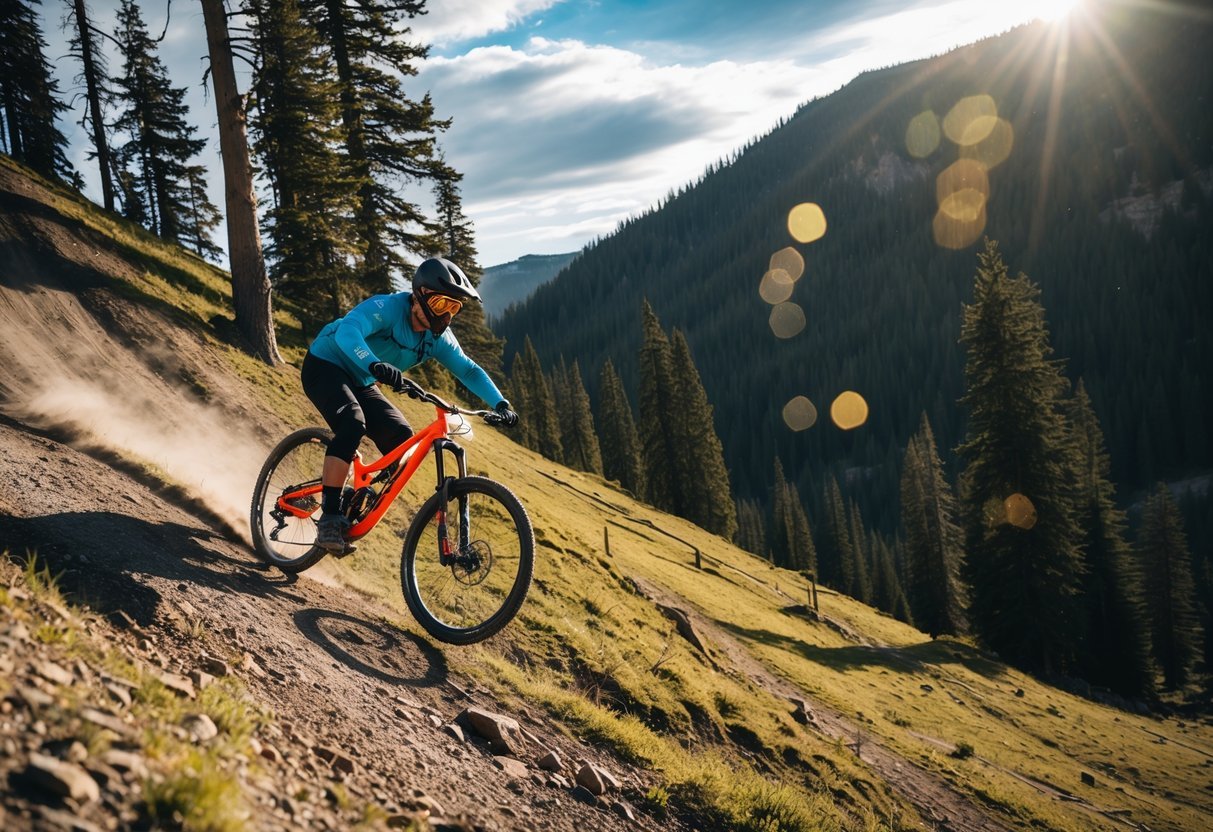Downhill mountain biking has come a long way since its early days.
From humble beginnings on modified bikes, the sport has evolved into a high-octane thrill ride down steep, technical trails.
As technology and rider skills have progressed, so too have the bikes and equipment used to tackle these challenging descents.
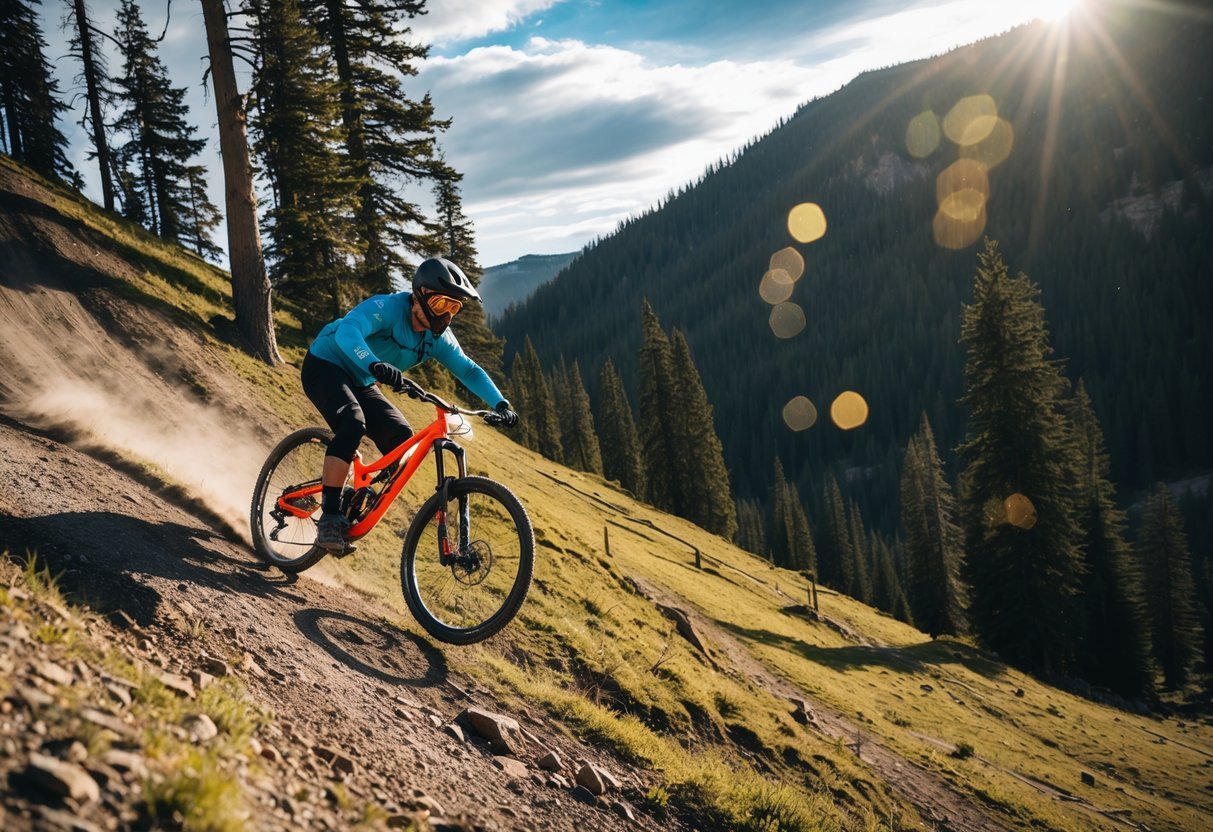
You’ll be amazed at how far downhill mountain biking has come in recent years. New developments in bike design, suspension systems, and safety gear have pushed the limits of what’s possible on two wheels.
Whether you’re a seasoned pro or a curious newcomer, these advancements are changing the game for downhill MTB enthusiasts everywhere.
Get ready to dive into seven exciting developments that are shaping the future of this adrenaline-pumping sport.
1) Wireless Suspension Systems
Ever wished your bike could read your mind? Well, wireless suspension systems are getting pretty close.
These high-tech setups are changing the game for downhill mountain biking.
You’ll love how these systems automatically adjust your suspension on the fly.
No more stopping to fiddle with knobs and levers.
Your bike adapts to the terrain in real-time, giving you the perfect ride.
FOX Live Valve Neo is leading the charge with their lightning-fast wireless control.
It’s like having a suspension expert on board, making split-second decisions for you.
But it’s not just FOX in the game. RockShox Flight Attendant is another system that’s turning heads.
It tweaks your fork and shock damping automatically, so you can focus on shredding the trail.
These wireless wonders are making downhill rides smoother and faster than ever.
You’ll feel like you’re floating down the mountain, with your bike working in perfect harmony with the terrain.
2) Adaptive Frame Geometry
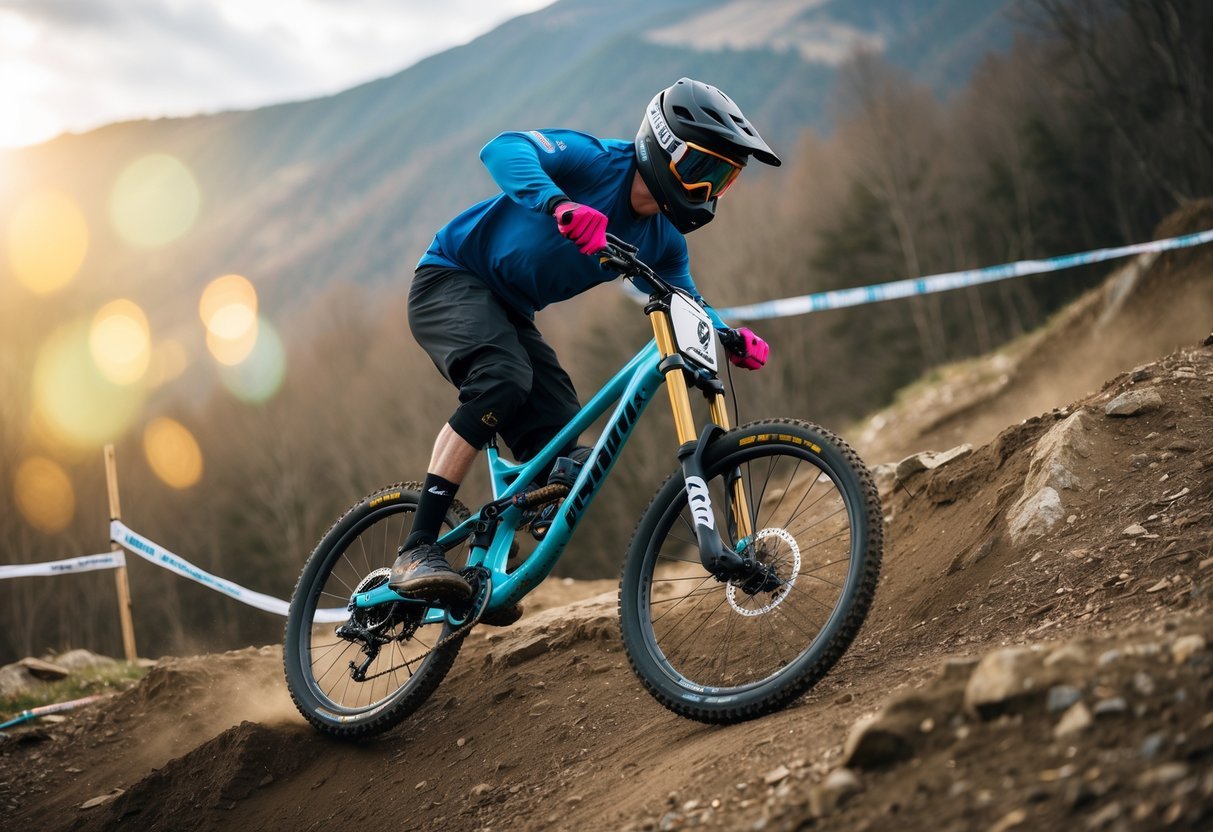
Mountain bike frame geometry has come a long way in recent years.
You’ll notice that modern bikes handle differently from those of the past.
This is largely due to adaptive frame geometry.
Bike manufacturers are now designing frames that can adjust to different riding styles and terrain.
You can tweak the head tube angle, bottom bracket height, and chainstay length on many new models.
These adjustments let you fine-tune your bike’s handling.
Want a more stable ride for steep descents? Just slacken the head angle.
Need better climbing performance? Steepen it up.
Some bikes even offer on-the-fly geometry changes.
With the flip of a switch, you can transform your ride from an efficient climber to a downhill beast.
This adaptability means you’re not locked into one riding style.
Your bike can evolve with your skills and preferences.
It’s like having multiple bikes in one frame.
Adaptive geometry isn’t just for pros.
Even casual riders can benefit from these adjustments.
You’ll find it easier to tackle new trails and push your limits.
3) High-Performance Anti-Slip Tires
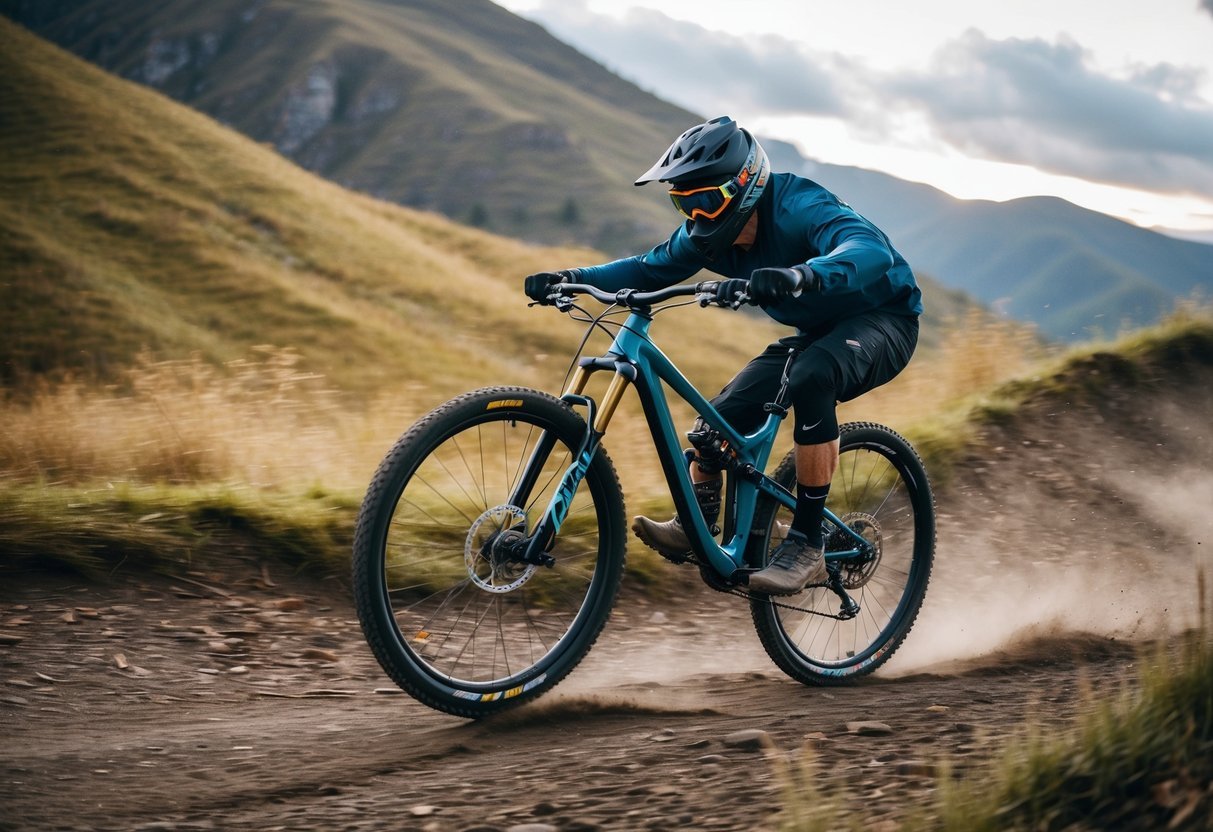
You’ve probably noticed that downhill mountain biking has gotten a whole lot grippier lately.
That’s thanks to some seriously impressive developments in tire technology.
Manufacturers are now creating tires with advanced rubber compounds that stick to the trail like glue.
These new formulas give you unbelievable traction, even in wet and muddy conditions.
But it’s not just about the rubber.
The tread patterns are getting smarter too.
You’ll find aggressive cornering tires like the Maxxis Minion DHF that excel at carving through turns.
Tire companies are also playing with different widths and profiles.
Some riders are loving the extra stability of wider tires, while others prefer a narrower profile for less rolling resistance.
And let’s not forget about tubeless setups.
They’re practically standard now, allowing you to run lower pressures for even more grip without worrying about pinch flats.
With these high-performance tires, you can push your limits and tackle gnarlier trails than ever before.
Just remember to choose the right tire for your riding style and conditions.
4) Lightweight Carbon Fiber Helmets

Protecting your noggin is crucial when you’re bombing down gnarly trails.
Lucky for you, helmet tech has come a long way in recent years.
Carbon fiber has revolutionized the downhill helmet game.
These lids are now lighter than ever, without sacrificing an ounce of protection.
You’ll hardly notice you’re wearing one as you shred the trails.
Some of the lightest full-face helmets weigh in at just over 600 grams.
That’s less than your average trail helmet from a few years back!
But don’t think these featherweights skimp on safety.
Many meet or exceed rigorous downhill racing standards.
You can push your limits knowing your brain bucket has got you covered.
Ventilation is another big plus with these new carbon helmets.
You’ll stay cooler on those long, sweaty descents.
Some even feature removable chin bars for climbing sections.
Want the best of both worlds? Check out convertible helmets like the Bell Super Air R MIPS.
It’s super light and lets you switch between full-face and open-face modes in seconds.
5) Electric Downhill Mountain Bikes
Electric downhill mountain bikes are shaking up the world of extreme sports.
These powerful e-bikes are bringing new thrills to the trails, allowing you to conquer steeper slopes and tougher terrain.
With motors producing up to 85Nm of torque, electric downhill bikes give you an extra boost when you need it most.
You can push yourself further and tackle more challenging runs without burning out too quickly.
E-bikes are also making downhill riding more accessible.
The added power helps less experienced riders keep up with their more skilled buddies, opening up new riding possibilities for groups of mixed abilities.
But don’t think e-bikes are just for beginners.
Even pro riders are embracing the technology.
The extra power lets you session difficult sections repeatedly, helping you dial in your technique faster.
Downhill performance is key when choosing an electric mountain bike.
Look for models with robust suspension, strong brakes, and grippy tires to handle the demands of steep descents.
As battery technology improves, e-bikes are getting lighter and more maneuverable.
This means you can enjoy the benefits of electric assistance without sacrificing the playful handling that makes downhill riding so fun.
6) Smart Route Mapping Apps
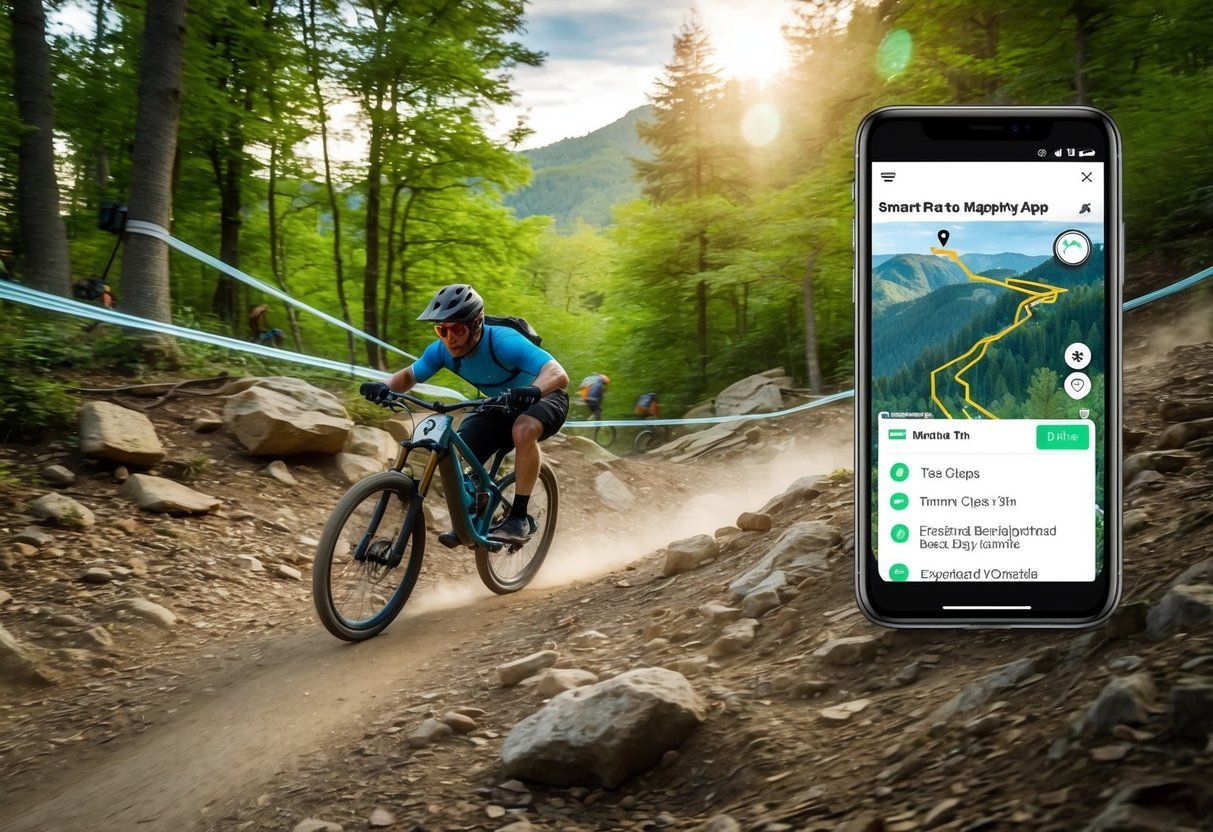
You’ve probably noticed that mountain biking tech is getting smarter by the day.
Now, you can plan your downhill adventures with some seriously cool apps.
Komoot is one of the standouts.
It’s super user-friendly and lets you whip up a route in no time.
No more spending hours poring over maps!
Want to find the best singletrack trails? TrailForks is your go-to app.
It’s packed with user reviews and route suggestions, so you’ll always know what you’re in for.
For those times when cell service is spotty, GPS tools have got your back.
They’ll keep you on course with turn-by-turn directions, even in the middle of nowhere.
And if you’re looking to share your epic rides, some apps let you do just that.
You can show off your routes and check out what other riders are up to.
These apps aren’t just about finding your way.
They’re changing how you experience downhill mountain biking, making it easier and more exciting than ever.
7) Advanced Brake Cooling Technology
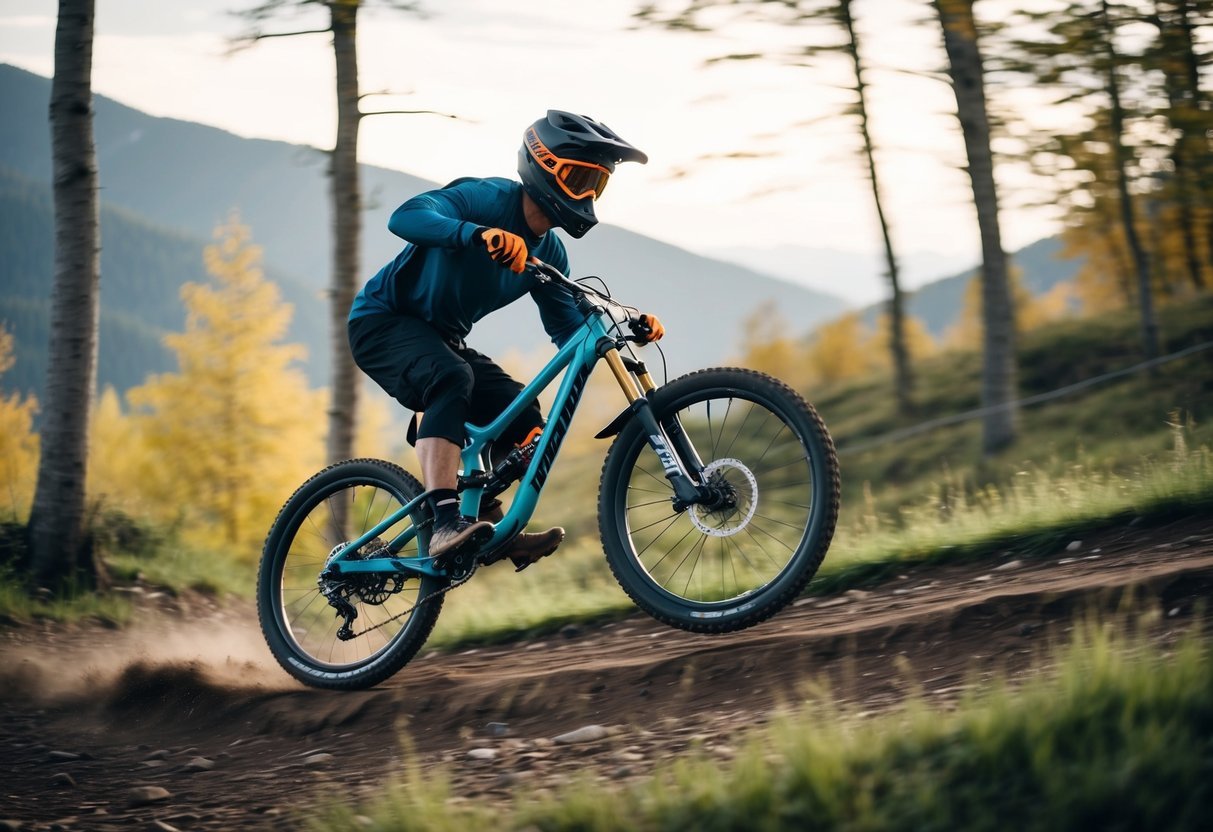
You’ve probably noticed how hot your brakes can get on those long, gnarly descents.
Well, the latest brake cooling tech is here to change the game for you.
Imagine ripping down the mountain without worrying about brake fade.
That’s what advanced cooling systems are bringing to the table.
These bad boys use clever designs to keep your stoppers cool under pressure.
Some new brake systems have built-in heat sinks that draw heat away from the rotor.
Others use special fins or vents to increase airflow.
It’s like giving your brakes their own personal air conditioning.
You’ll find some rotors now come with slots or holes that help dissipate heat faster.
This means you can brake harder for longer without losing that crucial stopping power.
The best part? These cooling innovations aren’t just for the pros.
You can get your hands on this tech for your own ride.
It’s a game-changer for those epic downhill runs where every second counts.
With cooler brakes, you’ll have more confidence to push your limits.
So next time you’re shredding the trails, remember: your brakes are working smarter, not just harder.
Innovative Bike Technology
Downhill mountain biking has seen some seriously cool tech advancements recently.
These innovations are making bikes faster, more durable, and way more fun to ride.
Advanced Suspension Systems
You’ll be amazed at how far suspension tech has come.
Modern downhill bikes now feature sophisticated air and coil shocks that can handle insane impacts.
These systems use things like high and low-speed compression adjustments to fine-tune your ride.
Some bikes even have electronic suspension that automatically adjusts on the fly.
This means you get optimal performance whether you’re hitting big jumps or plowing through rock gardens.
The latest fork designs are using air springs with negative chambers for better small-bump sensitivity.
This gives you more control and comfort on rough trails.
Carbon Frame Advancements
Carbon fiber frames have totally changed the game for downhill bikes.
They’re now lighter, stiffer, and stronger than ever before.
Manufacturers are using advanced carbon layups to create frames that can take a beating.
These frames often have reinforced areas in high-stress zones for added durability.
You’ll find that many new carbon frames have integrated cable routing.
This not only looks cleaner but also protects your cables from damage.
Some brands are even experimenting with different types of carbon fibers and resins.
This allows them to fine-tune the ride characteristics of the bike, giving you that perfect balance of stiffness and compliance.
Trail Design Improvements

Downhill mountain biking trails are getting a major upgrade.
New approaches are making courses more thrilling and eco-friendly while boosting rider safety.
These enhancements include improved trail design, sustainable materials, and better signage to guide bikers through challenging sections.
As a result, top downhill mountain bikers 2024 are excited to test their skills on these revamped courses that promise not only adrenaline-pumping excitement but also a commitment to preserving the natural environment.
With these upgrades, the sport is poised for unprecedented growth and innovation, attracting both seasoned riders and newcomers alike.
Sustainable Trail Building
You’ll be stoked to ride the latest sustainable trails.
Designers are using clever techniques to minimize erosion and protect the environment.
Machine-built flow trails are popping up even in rugged mountain terrain.
These smooth, sculpted paths give you a fast, flowy ride while reducing impact.
Water management is key.
Designers incorporate natural drainage and use materials that stand up to heavy use.
This means less trail damage and more year-round riding for you.
Some parks are going big with major overhauls.
In Tulsa, they’re investing millions to create nearly 45 miles of cross-country trails and 6 miles of downhill runs.
You’ll have tons of new terrain to shred!
Enhanced Safety Features
Trail builders are upping their game to keep you safer on gnarly descents.
New designs incorporate wider turns and improved sightlines to reduce surprise encounters.
You’ll notice more “catch berms” – banked corners that help scrub speed if you’re coming in hot.
These can be a lifesaver on steep sections.
Technical features now often have multiple lines.
This lets you progress at your own pace, choosing easier options until you’re ready to tackle the big stuff.
Trail crews are also getting savvy with signage.
Clear difficulty ratings and warnings about upcoming obstacles help you make smart choices on the fly.
Frequently Asked Questions
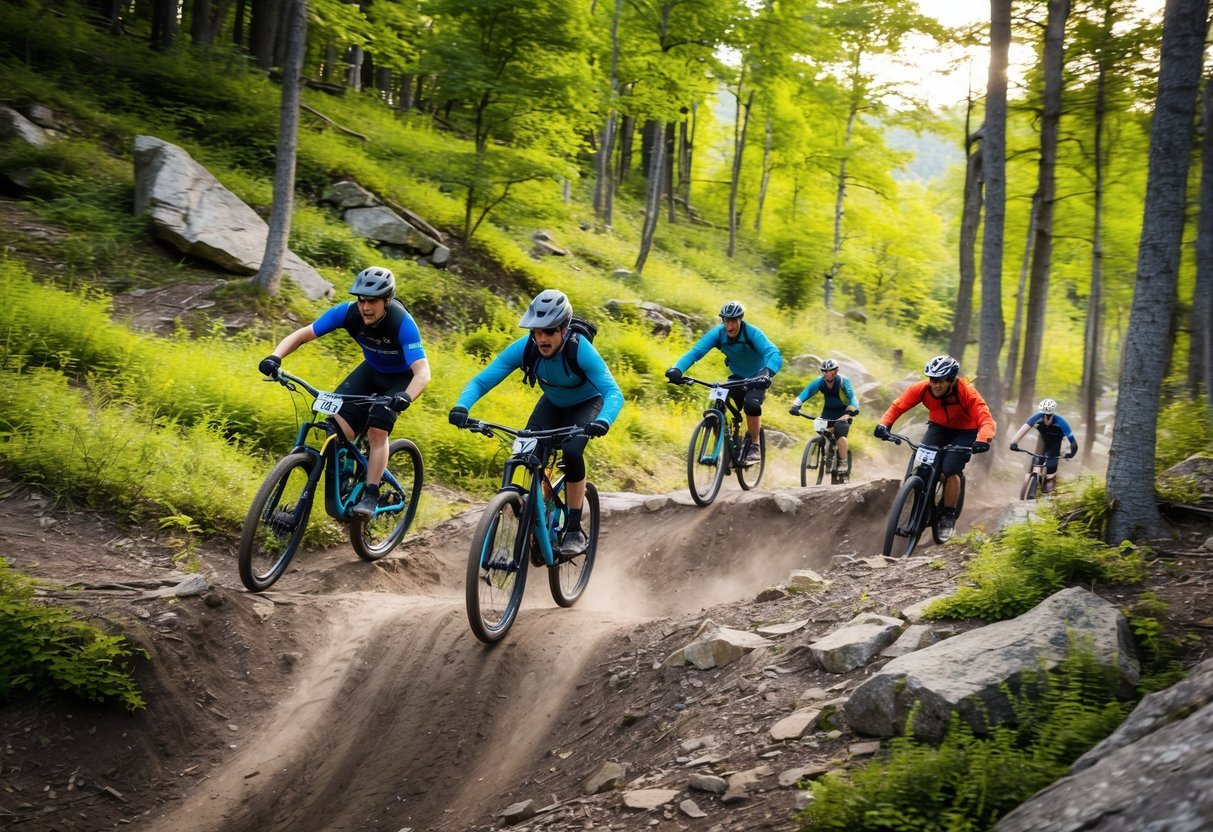
Downhill mountain biking has seen some wild changes lately.
From high-tech gear to cutting-edge bike designs, there’s a lot to catch up on if you’ve been out of the loop.
What’s the latest tech changing the game in downhill MTB?
Wireless suspension systems are shaking things up on the trails.
You can now adjust your ride on the fly without taking your hands off the bars.
Pretty sweet, right?
Electric downhill bikes are also making waves.
They’re giving riders a boost up those gnarly climbs, so you can save energy for the descent.
How have mountain bikes evolved over the recent years?
Adaptive frame geometry is the name of the game now.
Your bike can change its shape mid-ride to tackle different terrains.
It’s like having multiple bikes in one!
Carbon fiber is everywhere, making bikes lighter and stronger than ever.
You’ll feel the difference when you’re whipping through those tight turns.
What features are a must-have on the latest downhill bikes?
High-performance anti-slip tires are non-negotiable these days.
They’ll keep you glued to the trail in all conditions.
Dropper posts are standard now.
You can adjust your seat height on the go, giving you more control and confidence on steep descents.
Can you break down the key performance factors in modern downhill biking?
Weight distribution is crucial.
Bikes are designed to keep you centered and balanced, even on the craziest trails.
Suspension travel has increased, soaking up bigger hits and making your ride smoother.
You’ll be floating over rocks and roots like never before.
What trends are dominating the downhill mountain biking scene in 2024?
Mixed wheel sizes are all the rage.
A bigger front wheel for stability and a smaller rear for maneuverability? Best of both worlds!
Sustainability is huge.
Brands are using recycled materials and eco-friendly manufacturing processes.
You can shred responsibly now.
What’s the buzz about the new mountain biking gear this year?
Lightweight carbon fiber helmets are taking off.
They offer better protection without weighing you down.
Smart glasses with built-in displays are gaining traction.
You can see your speed, heart rate, and trail info without taking your eyes off the path.


